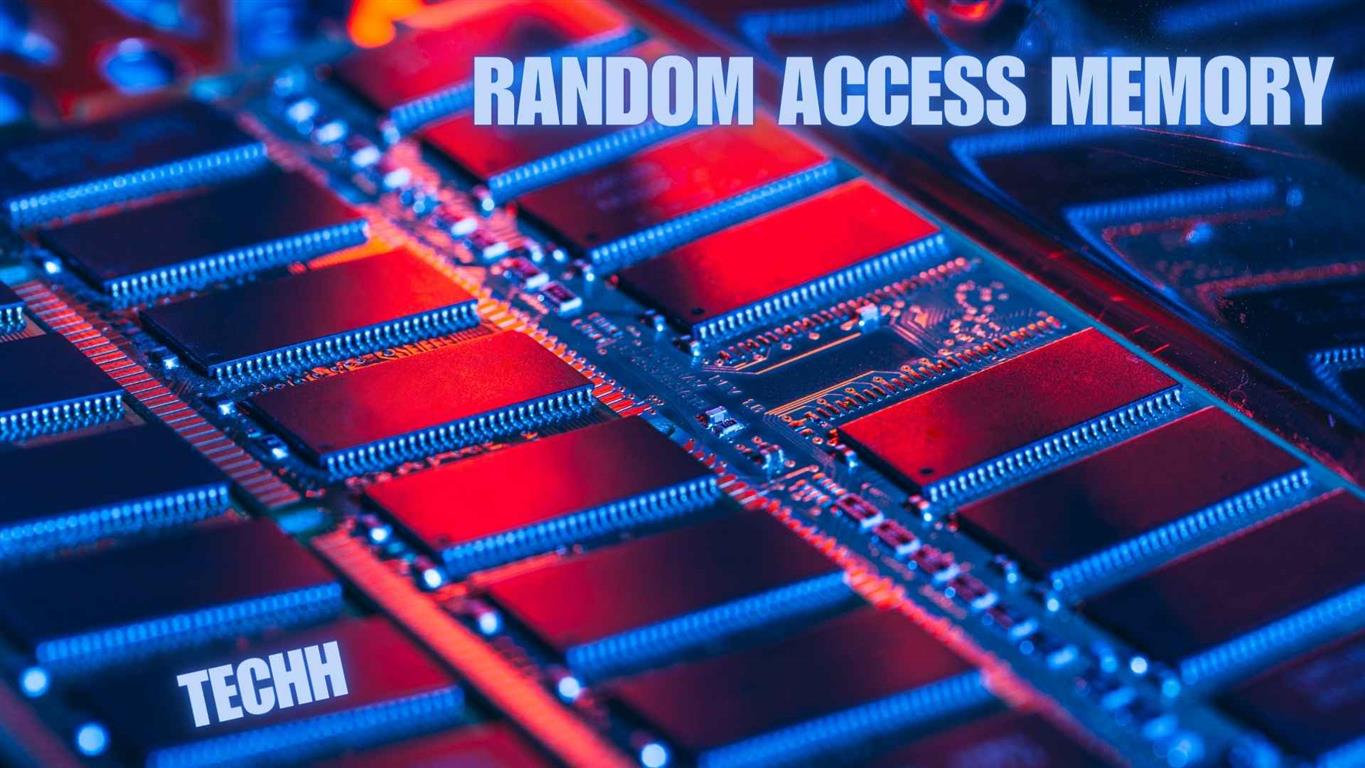Introduction
In the digital age, where technology is intertwined with nearly every aspect of daily life, understanding the fundamental components of computing devices is crucial. At the heart of these devices lies Random Access Memory (RAM), a critical piece of hardware that plays a vital role in defining the performance of computers, smartphones, and numerous other electronic devices. RAM is the lightning-fast and temporary data storage that systems use to handle active tasks and processes. Without it, doing just about anything on any system would be significantly slower, not to mention frustrating.
What is Random Access Memory (RAM)?
Random Access Memory, or RAM, is a form of computer memory that can be read and change in any order, typically use to store working data and machine code. Unlike hard drives, which store data long-term, RAM only retains information as long as the computer is on and active. When the system shuts down, whatever was in RAM is lost unless it was save to the permanent storage.
The Role of RAM in Computing Systems
RAM’s primary function is to provide quick read and write access to a storage medium that is much faster than hard drives or solid-state drives. This rapid access nature of RAM allows a computer’s processor to access data much quicker than if it were to read off a slower disk drive or solid-state storage, making the operation of the computer much more efficient and allowing for multitasking without significant slowdowns.
The Evolution of RAM
The evolution of RAM from magnetic-core memory to dynamic RAM (DRAM) to modern synchronous dynamic RAM (SDRAM) illustrates the technological advances that have been achieve over the years. Each iteration has brought improvements in speed, size, capacity, and power consumption.
Types of RAM
Static RAM (SRAM) vs. Dynamic RAM (DRAM)
RAM is typically divided into two types: static RAM (SRAM) and dynamic RAM (DRAM). SRAM retains data bits in its memory as long as power is being supplies and is use for a computer’s cache memory. It is faster but also more expensive than DRAM, which must be refresh thousands of times per second in order to hold its data bits.
Synchronous Dynamic RAM (SDRAM)
SDRAM, the most common form of RAM found in computers today, synchronizes with the system bus and is capable of running at higher clock speeds, making it significantly faster than its predecessors.
Modern Advancements: DDR, GDDR, and Beyond
With the advent of Double Data Rate (DDR) RAM, and its subsequent generations (DDR2, DDR3, DDR4, and DDR5), data transfer rates have dramatically increased. Graphical DDR (GDDR) RAM, specifically designed for graphics cards, allows for even higher speeds and performance in visual rendering.
How RAM Works
Memory Cells and Access Speed
RAM consists of millions of tiny cells that hold bits, and these cells are organize into rows and columns. These cells can be access in any order, hence the name “random access,” as opposed to “sequential access” as seen in older storage devices.
The Bus System and Data Transfer
Data is transferr to and from RAM via the system bus. The speed at which this bus operates can significantly affect the overall speed of the memory operation, thus impacting system performance.
The Importance of RAM Capacity
The amount of RAM in a system can greatly affect how the system performs, especially when handling large files or multitasking between applications that use a lot of data. The more RAM a system has, the more data it can handle at once, which can lead to faster performance and more efficient operation.
RAM in Different Devices
RAM in Desktops and Laptops
While The role of RAM in personal computers is to provide the space for the operating system, applications, and other processes to operate. Adequate RAM is essential for running complex software, gaming, video editing, and performing other intensive tasks.
RAM in Smartphones and Tablets
Smartphones and tablets also utilize RAM, albeit in a different architecture tailored to the compact design and power efficiency required by these devices. Mobile RAM, often LPDDR (Low Power DDR), is optimize to balance performance with battery life.
RAM in Servers and Workstations
In server and high-performance workstation environments, RAM is even more crucial. These systems often use error-correcting code (ECC) RAM, which can detect and correct common types of data corruption, ensuring greater reliability for critical applications.
Factors Affecting RAM Performance
Frequency and Latency
RAM frequency and latency are two critical factors that affect performance. Higher frequency RAM operates faster, but this must be support by the CPU and motherboard.
Compatibility and Configuration
The compatibility of RAM with the motherboard and the CPU is paramount. Additionally, the configuration of RAM sticks in dual or quad-channel setups can impact the performance, with multi-channel configurations providing a wider bandwidth for data transfer.
The Future of RAM
As technology marches forward, the future of RAM is set to become even faster and more efficient. With new developments like 3D stacking and resistive RAM (ReRAM), we’re on the cusp of a new era of memory performance.
Conclusion
RAM is a fundamental hardware component that largely dictates the speed and efficiency of computing devices. As our reliance on technology grows, the demand for higher-capacity, faster RAM will continue to escalate. By understanding how RAM works and its role in our devices, we gain insight into the inner workings of the digital tools that we depend on and how they can be optimize for better performance.





